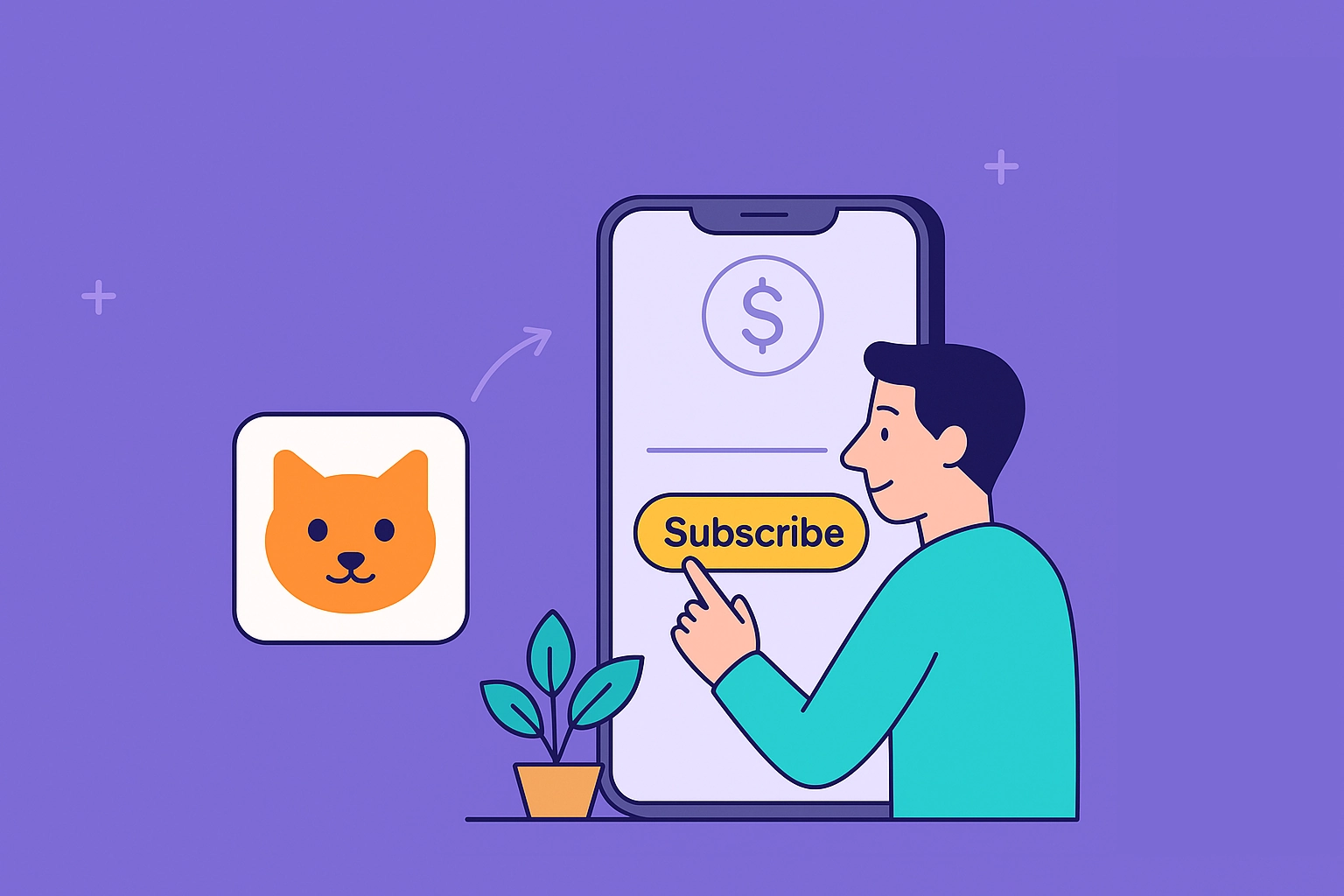Users often describe their favorite mobile apps as creating ‘magical’ experiences, like visualizing products in their living room or logging in with a glance.
These magical moments aren’t just delightful—they drive engagement, loyalty, and ultimately revenue. They’re also impossible to create in a mobile browser.
At MetaCTO, we specialize in helping companies move beyond the limitations of web to create these transformative mobile experiences. Here’s why native device features matter so much for your digital strategy.
The Native Advantage: What Web Can’t Do
Mobile apps have direct access to the full suite of device hardware and APIs that power modern smartphones. These capabilities enable rich, contextual experiences that simply aren’t possible in mobile browsers due to technical or security limitations:
Biometric Authentication
Native apps can leverage Touch ID, Face ID, or fingerprint scanning for instant, secure authentication. This removes the significant friction of typing passwords on mobile keyboards—a pain point that causes many abandoned transactions on mobile web.
Real-world impact: Finance apps using biometric login see 80% faster authentication times and 35% fewer abandoned sessions compared to those requiring password entry. 1
Camera and AR Integration
Native apps can access the camera for everything from document scanning to AR (augmented reality) product visualization. Furniture retailers like IKEA use AR to let customers visualize products in their homes before purchasing, while retailers use barcode scanning for quick price checks or product information.
Real-world impact: Retail apps with AR features see 11× higher conversion rates for products that can be visualized in-space versus those that can’t. 2
Offline Functionality
Native apps can cache content, user data, and functionality locally, allowing users to continue accessing information and even building shopping carts without an internet connection. When connectivity resumes, changes sync automatically.
Real-world impact: Travel apps with offline itinerary access report 27% higher engagement from users in areas with spotty connectivity, such as during international travel. 3
GPS and Location Services
While websites can access basic location information (with permission), native apps can leverage more precise location data, geofencing, background location tracking, and integration with mapping applications for directions.
Real-world impact: Retail apps using location-based notifications for nearby store promotions see up to 5× higher redemption rates than email promotions. 4
Device Sensors
Native apps can access the full range of device sensors like accelerometer (for step counting or motion detection), gyroscope (for orientation), ambient light sensor (for UI adjustments), proximity sensor, and more.
Real-world impact: Fitness apps leveraging accelerometer data for automatic activity tracking retain users 2.4× longer than those requiring manual logging. 5
Persistent Storage and Background Sync
Native apps can store larger amounts of data locally and sync in the background, even when the app isn’t actively being used. This enables experiences like automatic photo backup or content pre-loading that happens seamlessly.
Real-world impact: Media apps with background content sync (preloading articles/videos when on WiFi) report 41% higher consumption rates due to instant availability.
NFC and Bluetooth Integration
Native apps can interact with NFC (near field communication) for contactless payments or loyalty card scanning, and connect to Bluetooth devices for everything from fitness trackers to portable printers.
Real-world impact: Retail apps with integrated NFC loyalty programs process transactions 15% faster than those requiring separate physical cards.
Creating “Magical Moments” in Your App
The most successful apps don’t just use these technologies as gimmicks—they solve real user problems in ways that feel seamless and intuitive. Here are some examples of how native device features create those special moments:
1. The “Friction-Free” Moment
- Problem: Users abandoning purchases due to cumbersome login and checkout processes
- Native Solution: Face ID authentication + saved payment methods
- User Experience: “I just looked at my phone and tapped once—and my order was complete!“
2. The “It Just Works” Moment
- Problem: Spotty connectivity disrupting user experience
- Native Solution: Offline mode with background syncing
- User Experience: “I drafted my entire post while on the subway, and it just published automatically when I got above ground!“
3. The “How Did It Know?” Moment
- Problem: Generic experiences that don’t adapt to context
- Native Solution: Location-aware personalization
- User Experience: “I walked into the store and my app automatically pulled up my loyalty card and showed in-store specials!“
4. The “Show, Don’t Tell” Moment
- Problem: Uncertainty about how products will look/fit in real environments
- Native Solution: Camera-based AR visualization
- User Experience: “I could see exactly how the couch would look in my living room before I bought it!“
5. The “Seamless Connection” Moment
- Problem: Manual data entry from physical world to digital
- Native Solution: Camera-based scanning (QR codes, barcodes, documents)
- User Experience: “I just scanned the receipt and all my items were automatically added to my expense report!”
Implementation Strategies: Finding the Right Approach
Implementing native features doesn’t have to mean building completely separate apps from scratch or abandoning your web presence. Here are strategic approaches we recommend:
1. Identify High-Value Feature Opportunities
Not every native capability will deliver equal value for your business. Analyze your customer journey to identify moments where device features could remove friction or enhance experiences:
- Where do users abandon transactions?
- What tasks are cumbersome on mobile web?
- Where could contextual awareness improve the experience?
- What capabilities would create competitive differentiation?
2. Consider a Phased Approach
You don’t need to implement every native feature at once. We often recommend starting with:
- Core experience + one or two “magical” native features
- Basic offline functionality
- Biometric authentication and simplified checkout
- Push notifications with deep linking
- More advanced AR/device sensor integration
This allows you to get to market faster while still delivering immediate value.
Modern frameworks like React Native and Flutter allow you to develop once for both iOS and Android while still accessing most native device capabilities. This can reduce development time and cost by 30-40% compared to separate native codebases.
4. Leverage Your Existing Backend
One major advantage for established web businesses is that your backend infrastructure can typically be reused. The mobile app connects to the same APIs and databases, minimizing duplicate work.
Conclusion: The Competitive Advantage of Going Native
As more companies invest in mobile apps, consumer expectations continue to rise. The companies that will win mobile are those that leverage device capabilities to create experiences that are not just functional but memorable.
The numbers support this strategy: companies with apps that leverage native capabilities see substantially higher engagement metrics:
- Session duration: 3.6× longer than mobile web
- Return visit frequency: 1.9× higher than mobile web
- Customer satisfaction (NPS): 26 points higher on average
- Conversion rate: 3-4× higher than mobile web
At MetaCTO, we specialize in helping established web businesses make the leap to app experiences that leverage these native capabilities. Our approach focuses on identifying the features that will deliver the greatest ROI for your specific business model and audience.
Ready to create magical mobile moments that drive engagement and revenue? Contact our team to discuss how we can help you leverage native device capabilities in your mobile strategy.
References




